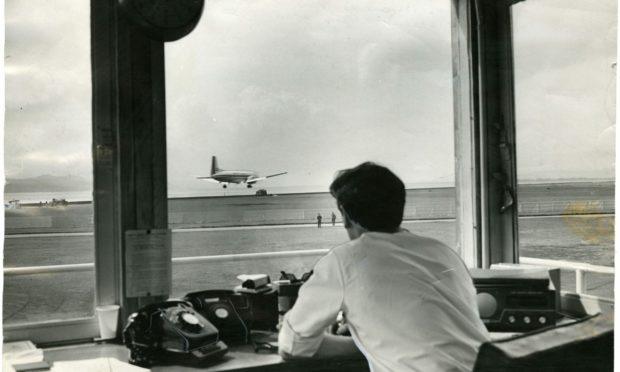Dundee Airport has grown beyond recognition from its humble origins when it was originally equipped with a grass runway in the 1960s.
Over the years, the airport was expanded, upgraded and improved and provided Dundee with a link to cities in the UK and Europe.
The Tay Road Bridge played its part in the development of air services out of Dundee.
Willie Logan, of Duncan Logan, the main contractors, used a light aircraft to commute to and from Dundee during the bridge construction but, at times, the aircraft “rested” at Riverside.
Geoffrey Hoyle, then manager of Mackay Brothers travel agents, and Mr A. S. Dow, of Dundee Parks Department, which owned Riverside, persuaded Willie to allow his aircraft to be used for charters when not required.
The first booking was made by the late Maurice McManus, then Lord Provost, and Mr Dow, who flew to London via Renfrew for talks with parliamentary secretary, aviation, Mr Neil Martin on the need for a Dundee air service.
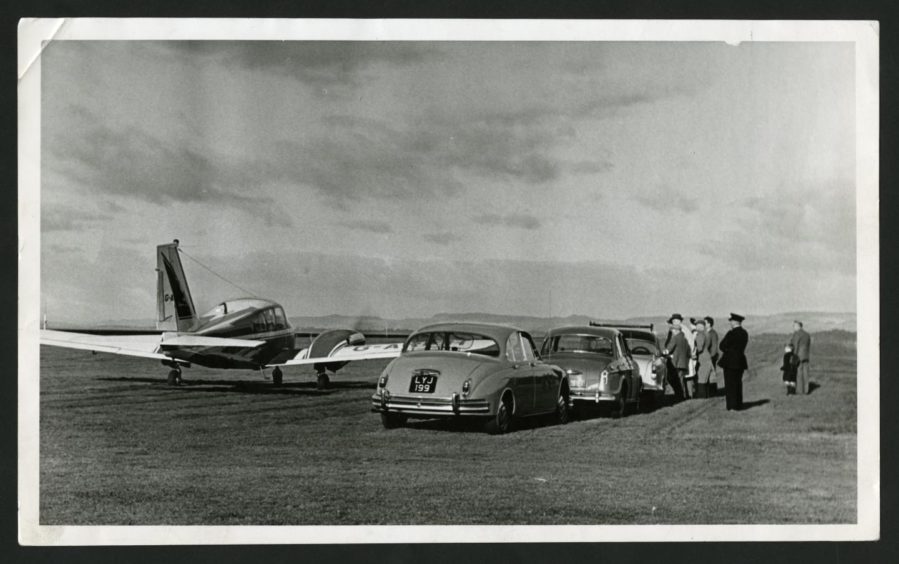
Our next picture is from October 1963 and two painters are seen freshening up the paintwork on the white fencing at the airstrip.
The 1,100 yard strip had so far only been available for charter planes under 6,000kg in weight.
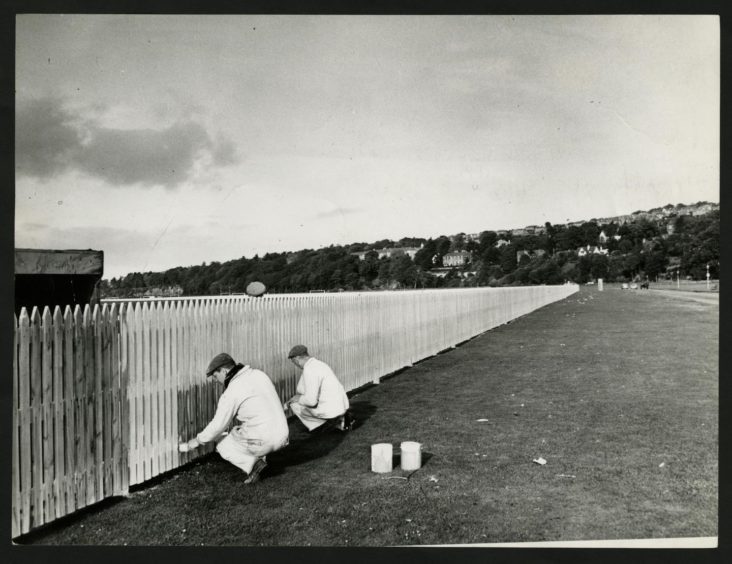
The Civil Aviation Licensing Authority eventually granted the airstrip official status which meant that scheduled services could now be laid on.
A windsock flutters with Dundee in the background in this picture from January 1965.
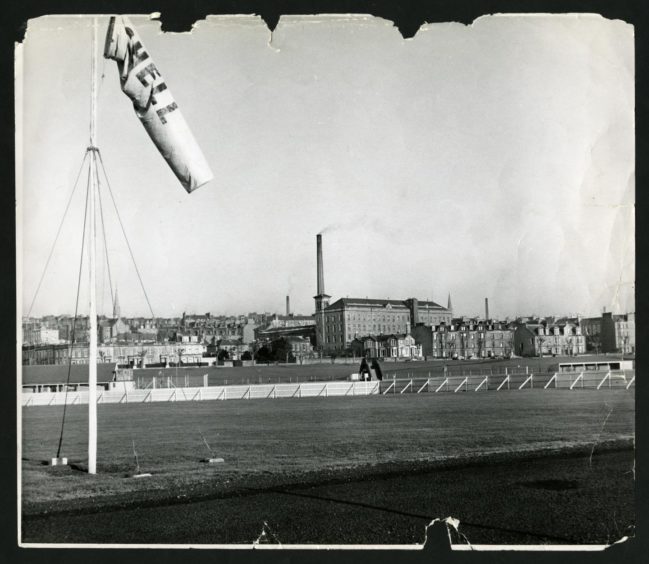
The Riverside Air Strip control tower is pictured in 1966 which was a simple square construction of wood and glass on the second storey.
The airport would go on to become a vital transport link for Tayside and North Fife, serving business and leisure travellers alike.
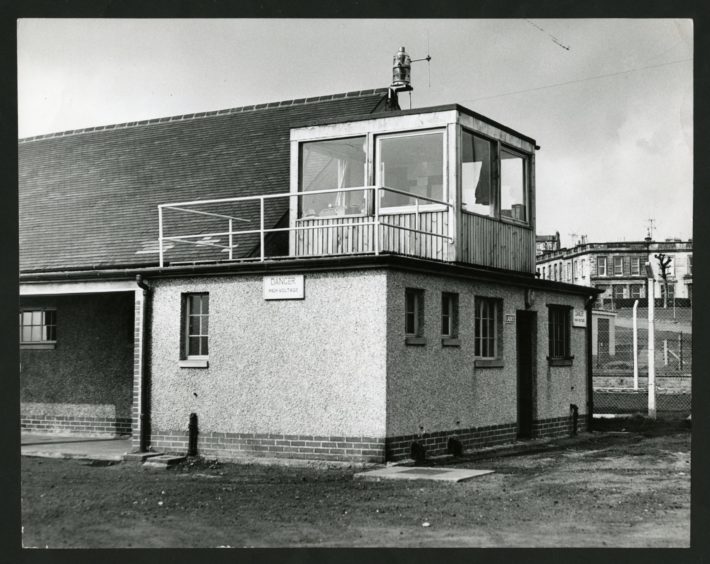
The British Eagle Dove aircraft made the first scheduled passenger air flight from Riverside Airport in July 1966.
Its services to Glasgow, Edinburgh and Prestwick proved short-lived due to British Eagle’s poor financial results and the airfield closed in 1968.
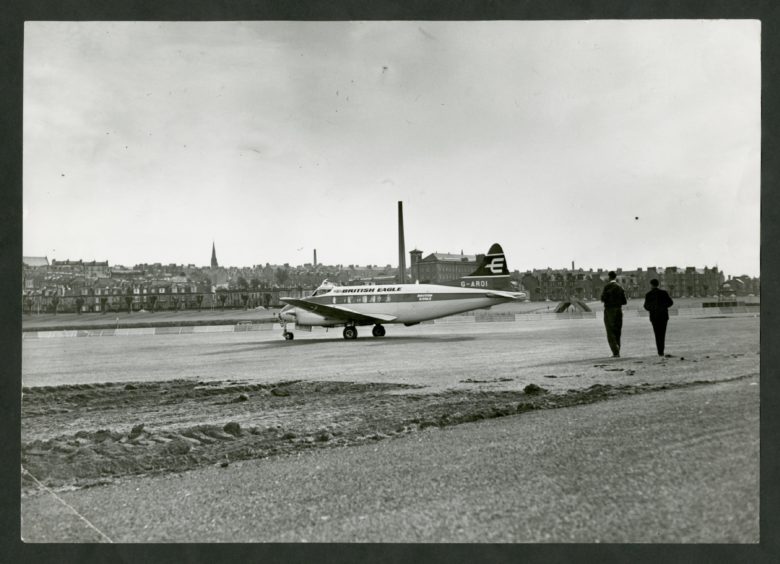
The grass strip was replaced with a tarmac runway after the airfield reopened in 1970 and Loganair operated various services between 1971 and 1975.
The airport was granted “customs airport” status in 1982 and runway edge lights were added in 1983 along with a new terminal extension.
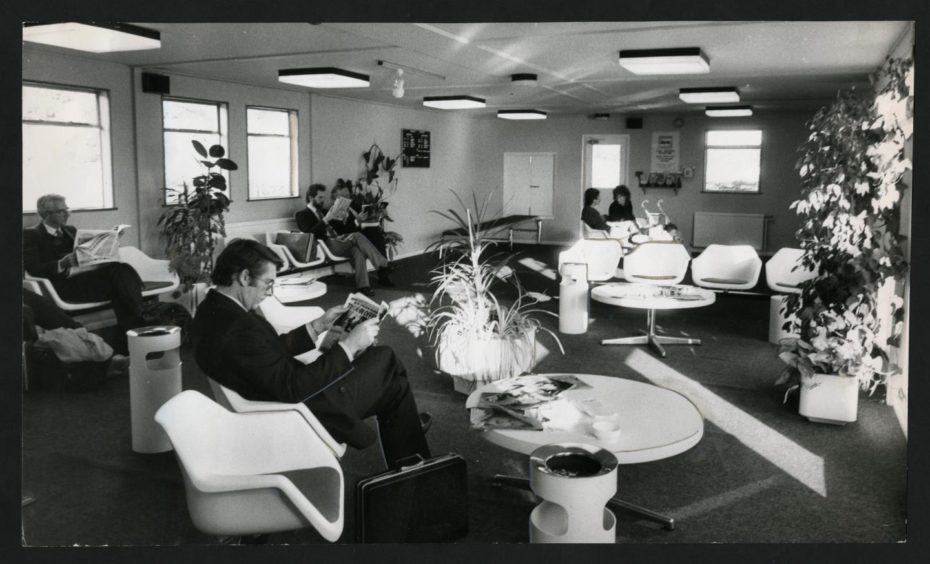
Tayside Aviation began pilot training at Dundee in 1978 and during the 1980s Air Ecosse operated flights to various locations using Short 330 and 360 aircraft.
Currently, the only available flight destinations from Dundee Airport are London and Belfast but services to Shetland will be available from May 2022.
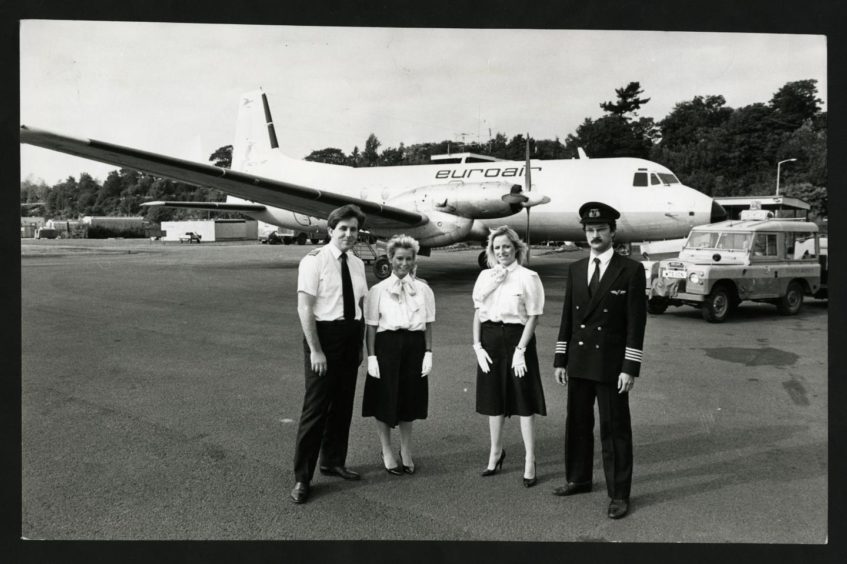
More like this:
